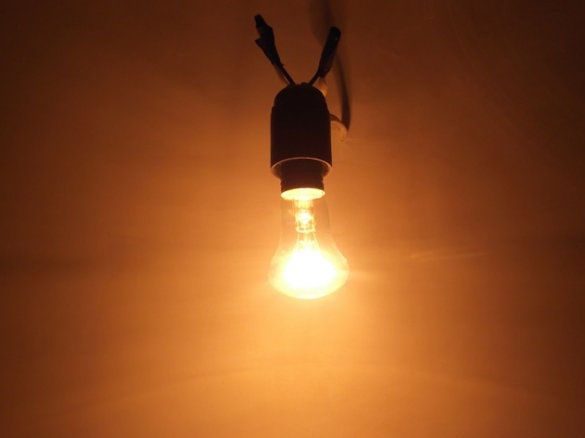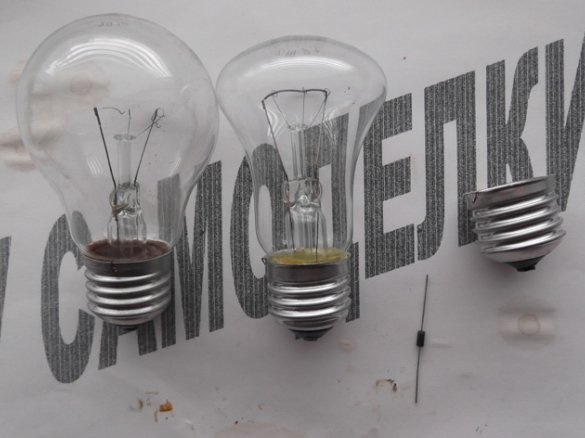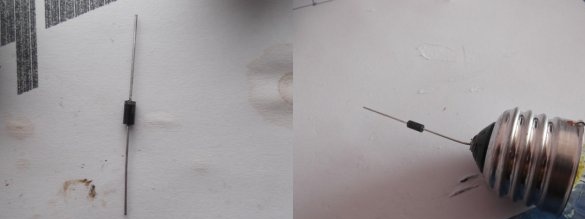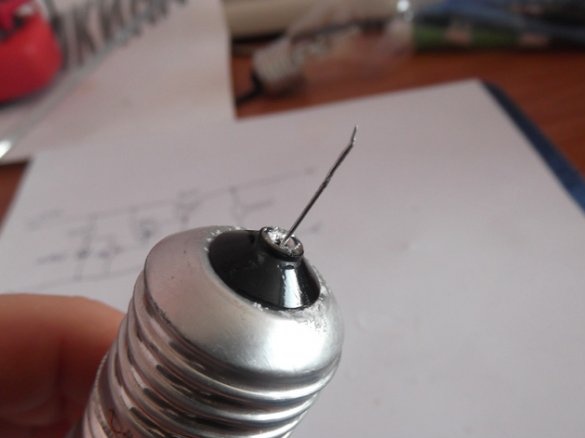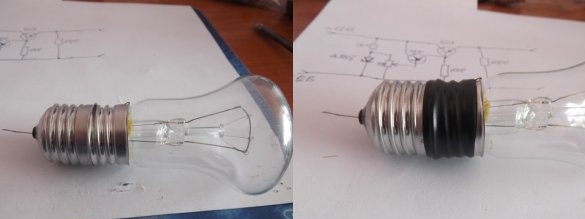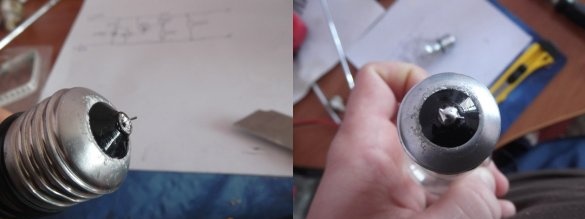Many people want to pay less for light, including a light bulb. Now there are a lot of all kinds of economical lamps, but they are also not a penny. The cheapest: incandescent lamp. Here the design is cheap and reliable. I hope it comes in handy!
He returned home late a couple of days ago, without taking either a phone or a flashlight, and as if it turned out bad and a light in the stairwell, he tried to find the keyhole for about 10 minutes and then also inserted the key - he tried for about 5 minutes .. oh, that light. once a week it burns out stably .. and then I remembered what they do in the army in such cases .. They make a light bulb from an ordinary incandescent lamp =) a housekeeper, because it eats half the electricity and burns out not so often ..
And so, to create this miracle bulb we need:
• Ordinary incandescent lamp (I took on 100W)
• Nippers
• Diode (I used a Chinese-made diode)
• Soldering iron and soldering accessories
First, let's take a look at the scheme, which, in my opinion, is extremely simple to repeat.
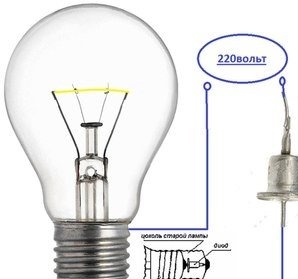
We take our incandescent lamp and solder the diode to it with the flow direction to the bulb.
Now we need to clean the base of the non-working light bulb from the glass, this must be done carefully and carefully so as not to get hurt.
Next, we take the base from the burnt out light bulb and heat the soldered contact on it with a soldering iron, as a result, a hole should form in which we pass the diode already soldered to the working light bulb.
Now we take our blank and put the base on the base and fix it with electrical tape or heat shrink.
We should get something similar to this:
Almost ready)
It remains only to trim the protruding end of the diode and solder it in the contact of the cap
Now done!
You can start testing, we screw our housekeeper into the cartridge and turn on the light
We see that the light is on in the floor and there is a certain flicker, but what else is needed for the entrance? This is enough for lighting. Now the bulb will last much longer and burns half as much electricity.
Thank you all and good luck!


